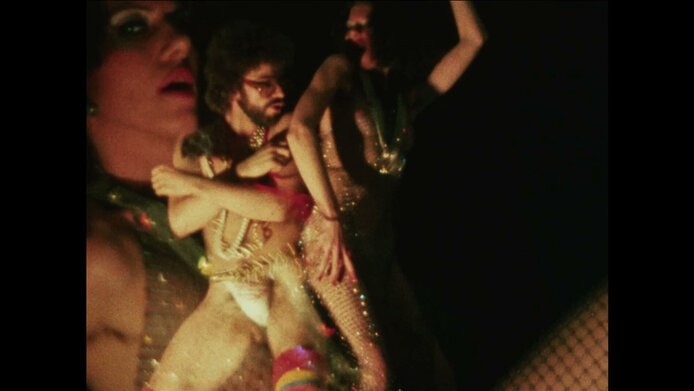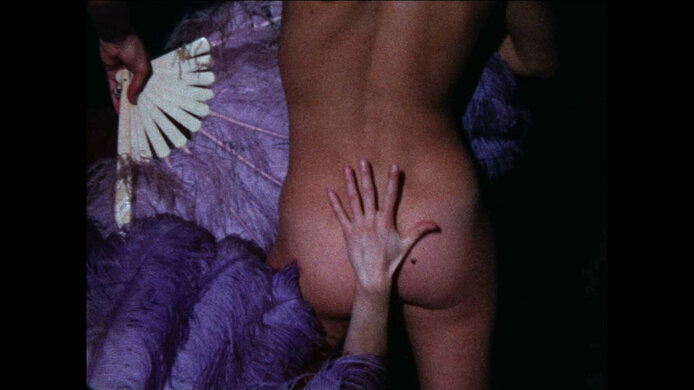Queer history in the age of datafication

In Austria, homosexuality was under a total ban until 1971. It took until 1996 for the ban on advertising and associations for LGBTIQ+ people to be lifted by a decree that opened up a crucial dimension for the representation of queer lifestyles. It actually was a significant step towards decriminalizing the visual (re)presentation of gay, lesbian, intersex and trans individuals. While it did not mean an automatic end of the discrimination against these lifestyles, it was an important legal step that seems more relevant than ever in times of social media and repressive systems.
“In terms of queer visual history, I distinguish three spheres of public life: a 'large' public sphere, reflected by television and film programs that depict LGBTIQ+ life. Then there is a counter-public or semi-public sphere, as evidenced by activist films made by gay or lesbian communities. And finally, there is something like a 'secret public sphere', which I consider to consist mainly of home movies or personal recordings,” explains Katharina Müller, Head of Research, Outreach and Publications at the Austrian Film Museum. Müller’s research project “Visual History of LGBTIQ+ in Austria and Beyond” is designed to capture precisely these “ephemeral” records, which were often created without an underlying commercial or artistic rationale and therefore usually in an illegalized context. Although Müller's focus is limited to audiovisual material created between 1900 and 2010, working with such self-documentation raises ethical questions that extend till the present day.
Personal details
Katharina Müller heads the Department of Research, Education and Publications at the Austrian Film Museum. Since 2011, she has been teaching film, media and cultural studies at the Universities of Vienna (Romance studies, theater, film and media studies), St. Gallen (HSG) and Salzburg/Mozarteum as well as at the Academy of Fine Arts Vienna.
Making queer history (in)visible
In-visibility is an ambivalent issue. Visual material that was never intended for a wider public requires the curator to exercise particular care and explore their own position: “In this respect, I am to a certain extent caught between two poles: as someone who works for the Film Museum, I was able to collect these films and ensure their long-term preservation. As a queer socialized person, I know that you can't just take the material and exhibit it. Ultimately, it's about how you deal with these records and, above all, how you convey the discontinuities and gaps in the narrative,” says Müller.
For this reason, the researcher considers a two-pronged strategy important. With the “Regenbogenfilme” collection project in cooperation with QWien (Center for Queer History) and the Film Museum, Müller is working in the spirit of visibility politics, where she specifically invites people to share their cinematic history. The presented content covers a wide range and includes everything from Super 8 films stored in a basement and boxes full of Hi8 tapes from private individuals to activist material produced by communities.
The second prong explores what can be done with material that is not intended for (re-)presentation. This is Müller's community-based curatorial work, which consists of talking to autonomous groups, associations and individuals about what should happen to the material in the first place and how collective decisions can be taken about it. The curator will organize small-format film screenings similar to home movie sessions to show individual films and fragments to a selected audience from now until 2025. In line with the spirit of the project, it is important to her that viewers come together through word of mouth, via queer peer groups and associations, rather than through large institutional announcements.
The private sphere is political
“I refuse to talk about private films in this project,” notes Müller who believes that as soon as something is herded into the private sphere by society, the idea of a home movie is tinged with resistance. In a nutshell: “The home becomes a den of defiance.” In this respect, the self-documentations of queer life are not simply private films, but open up political realms that are completely outside the mainstream due to the context in which they were created.
Whether it's a recording of a lesbian meeting, a travel video or a dark sound collage from a club: “What is interesting to me is the fact that there is something in this material that resists the ubiquitous privatization of existence that one is obliged to accept. It is something completely separate.” It is Katharina Müller’s observation that at every select screening she organizes, there are always two films running: the one being shown on the screen, and the inner movie emerging in the minds of those who see the material: “I try to act as a mediator in dealing with the things that come up in this way,” she explains.
On the ethics of images
The cut-off year in Müller’s project is 2010. Cell phones, video and the Internet multiplied the amount of visual material and a completely new media history began. And even if video (as opposed to expensive Super 8 film) was initially perceived as a feminist medium, many felt that it also smacked of surveillance. According to Müller, such observations raise major ethical questions of our time, and the central question is: how do we want to deal with images in general?
“I don't want to put anyone on display. The films were shot at a time when it was unthinkable that something like this could ever be studied retroactively.” This is why Müller does not show the selected material on platforms such as Instagram. In addition, datafication not only opens up new possibilities, but also confronts us with risks and dangers, especially in the context of increased repression from states. Müller's work is intended to encourage people to question their own relationship to images and the use they make of them. On the other hand, this film scholar also warns against a kind of over-protectionism in this matter, because one must ask who exactly is protected by such concerns and who or what is excluded or made impossible as a result?
Curatorial activism
“An event that always becomes an interesting starting point for me in this project is the Nazi looting in 1933 of the Institute for Sexual Sciences in Berlin that was founded by Magnus Hirschfeld. It is not by accident that this is considered one of the founding moments of the Third Reich. It was an unprecedented act of annihilation of diversity. In other words: where there is a collection, there can also be looting. This aspect can be traced far back in the history of collecting.” Katharina Müller's “Visual History of LGBTIQ+ in Austria and Beyond” provides an opportunity to rethink this dilemma, since not every exhibition needs to create a public display. And movements such as #BlackLivesMatter or #MeToo prove that (digital) collections of historical images also have a political power that can forge alliances.
Ultimately, it is precisely this aspect of Müller's research that holds relevance for the present time, because “queer history is a history of domains in which something can either be lived or not. Realms of (pre-)queer socialization are not only shown in the films, they can also be newly created through these films. That's what I call curatorial activism.”
About the project
The project “Visual History of LGBTQI+ in Austria and Beyond: Preserving and Curating Queer Ephemeral Media Spaces in an Age of Datafication” (2023–2025), a cooperation with the Austrian Film Museum, is based at the IFK International Research Center for Cultural Studies at the University of Art and Design Linz. It has been awarded roughly EUR 172,000 in funding from the Austrian Science Fund FWF.

![[Translate to English:] Regenbogenfahne](/fileadmin/_processed_/1/f/csm_pexels-shvetsa-5034452_27dc28c63b.jpg)





